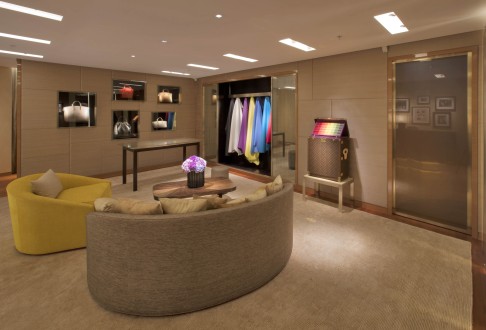
From couture to coffee, retailers are tailoring shops to big spenders
Luxury retailers are falling over themselves to offer cashed-up but jaded shoppers with the 'VVVIP' experience
Stroll around Tsim Sha Tsui, especially Canton Road, and you will see hordes of designer devotees. The shopping district is a good spot to look at the state of Hong Kong's luxury retail business. In fact, the sector has rebounded strongly since the financial crisis, and across Asia, upscale brand sales are booming, with Chinese shoppers at the front of the queue.
According to a McKinsey report, cashed-up Chinese shoppers are expected to account for more than 20 per cent of the world's luxury sales by next year.
But definitions of luxury are gradually evolving in Asia's dynamic consumer markets.
Names such as Loro Piana, Rick Owens, Penhaligon's, Ellie Saab and Alexander McQueen are emerging to target Asia's knowledgeable consumers, while several upscale brands have eschewed logos and monograms in favour of more subtle product labelling. Understated brands such as Bottega Veneta are experiencing strong sales growth.

This logoless trend shows no sign of abating, reflecting deep-pocketed shoppers' desire for new models of luxury - more personalised and unique.
But how to attract increasingly sophisticated shoppers - those seeking something beyond logos, such as craftsmanship, materials and heritage, as well as a more genuine brand experience - has been a challenge for luxury retailers.
Bespoke retail outlets are one of the answers to such a challenge.
Luxury retailers often want their Asia flagships to be a minimum 5,000 square feet, with decorative store facades to entice shoppers.
Premium brands such as Louis Vuitton, Prada, Gucci and Chanel go even further in planning their store design, sometimes requesting to be present at the table from the initial stages of a new mall's development.
This enables them, working in tandem with the developer's original design, to shape the most efficient stores that can bring a superior shopping experience to customers.
Once inside, store designs respond to consumer trends. VIP rooms are coming into their own because privacy and personalised pampering are considered a valued part of the luxury lifestyle. It is in such a comfortable, relaxing and private environment that big-ticket sales of exclusive pieces are often made.
To ensure a premium level of comfort and exclusivity, many large brands now also expect "VIP drop-offs" at the front of their stores, dedicated lifts and exclusive entrances for big-spending customers.
Even brands that usually require smaller retail spaces, such as Swiss watchmaker Breitling, are now including VIP rooms in their stores. For Breitling, VIP treatment is vital in attracting its high-net-worth customers, and secluded VIP-only entrances can attract customers to roll up in their Rolls-Royces.
It is not surprising that landlords and brands are attempting to outshine each other in perfecting their design of VIP rooms, the ideal of bespoke.
One creative example in VIP room design is a brand that turns its secluded warehouse into an invitation-only fashion showroom, accessible through a secret, password-protected door.
This logoless trend shows no sign of abating, reflecting deep-pocketed shoppers' desire for new models of luxury - more personalised and unique
Such unique and exclusive experiences no doubt impress the VIP guests. As a result, millions of dollars are being invested in luxury store designs and fit-outs to create an unparalleled atmosphere of exclusivity from start to finish.
In addition, more brands are now creating the premium shopping experience by retaining exclusive collections for their "VVVIP" customers.
But while high-end luxury retailing is booming, sophisticated consumers also complement their purchases with mass-market consumption, which explains why fast fashion brands such as Zara and Uniqlo have continued their spectacular growth in Asia.
Luxury has also diversified beyond fashion, watches and jewellery. Take Fuel Espresso from Wellington, New Zealand, founded by Sanjay Ponnapa, which has positioned itself as a luxury "espresso boutique". Each Fuel Espresso store features an ambience that matches the world's leading luxury brand boutiques while delivering first-class service plus superlative coffee.
This perfection is paying off. Fuel's boutiques in Hong Kong, Shanghai and New Zealand each sells several hundred cups of coffee a day, with most clients hailing from the finance, insurance and real estate sectors.
Growing middle-class spending power and sophisticated brand marketing suggest that luxury retailing in Asia will continue to diversify.
For brands, this will require larger, experience-led stores, more creative flagship designs and a greater emphasis on online and smartphone interactivity with customers. The shopping experience will become more unique and exclusive to meet the desire for personalised luxury.

